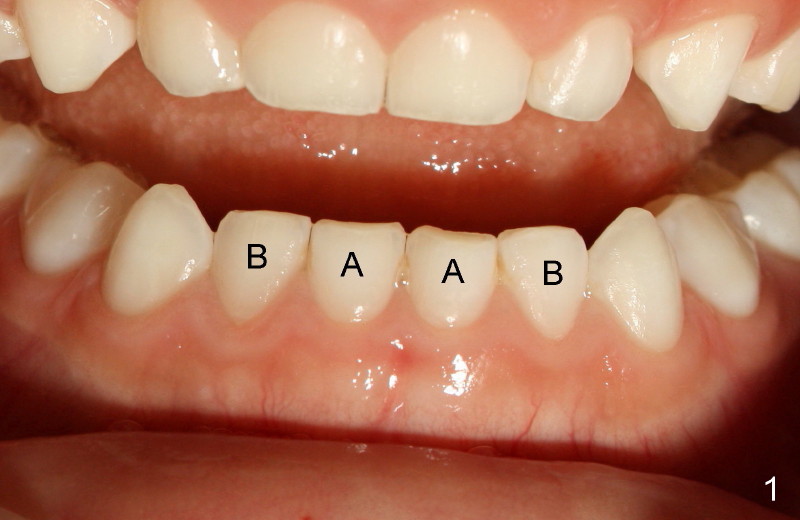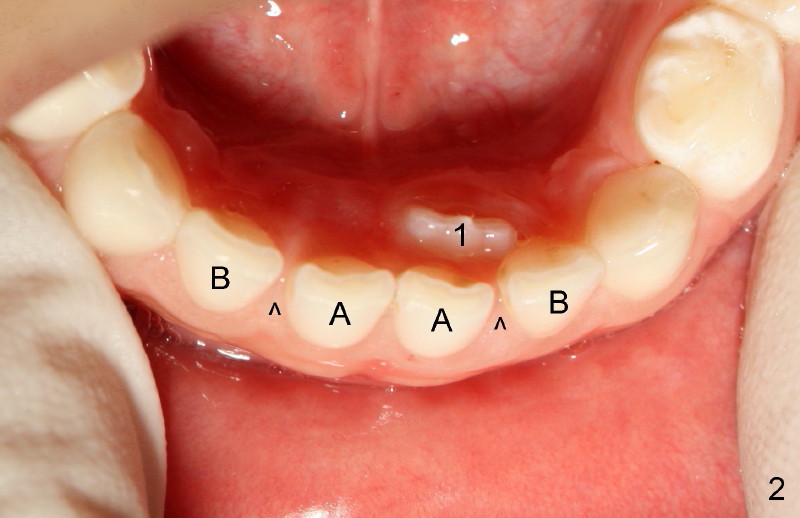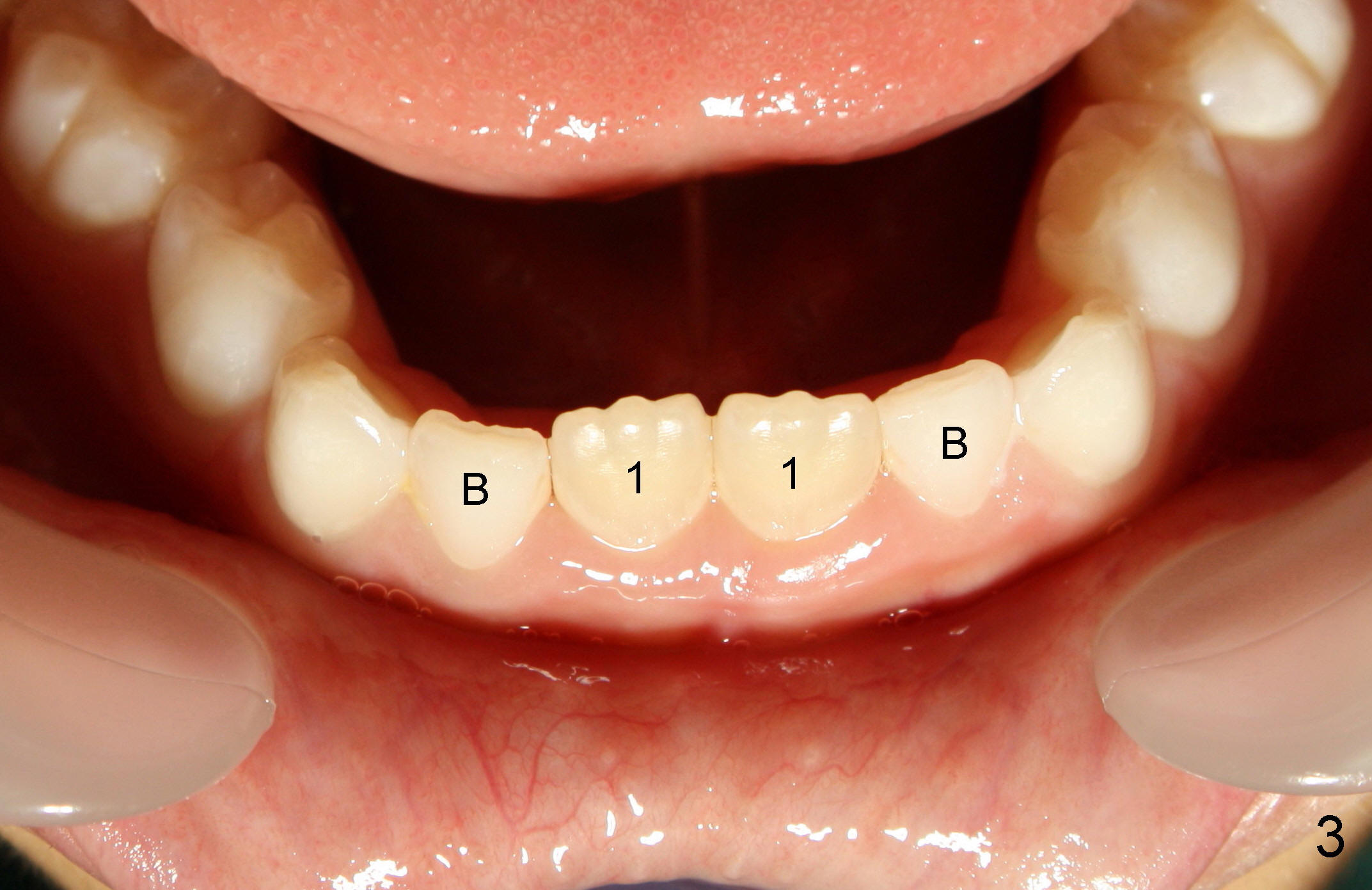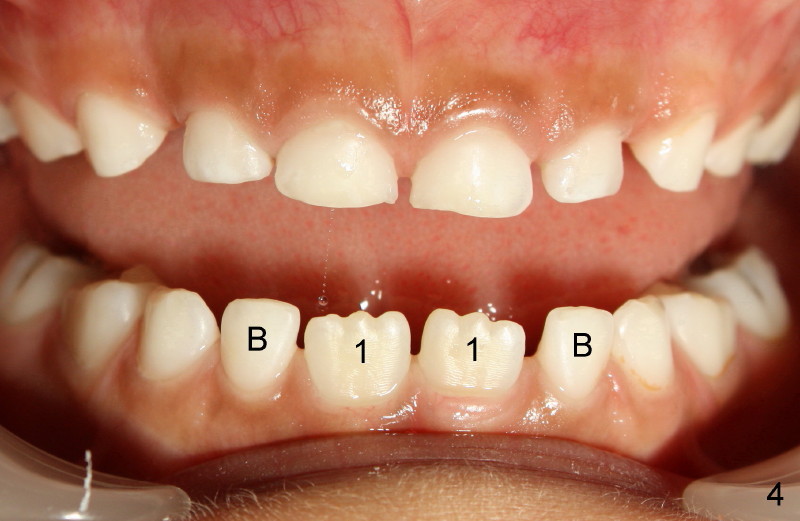



 |
 |
 |
 |
From Baby Teeth to Adult Ones
All of 20 baby teeth eventually come in at the age of 2.5. They are lovely and as white as ivory. In addition, they are aligned very well as shown in Fig.1. There are no spaces between them. A and B stand for four of lower front teeth. They sit tightly against their neighbors, usually before the age of 4.
To anticipate adult teeth's arrival (they are usually wider than baby ones as mentioned in Introduction), our jaws need to expand. Gradually there are spaces between baby teeth between the age of 4 and 6. Although baby teeth look less attractive with spaces, they are normal. In fact, the bigger the spaces, the better off.
On the other hand, when the spaces are not big enough, there is a little problem with welcome party for adult teeth. Fig.1 is taken when Daniel is 5.5 years old. There are no spaces between baby teeth, suggesting that jaw development is delayed a little bit.
When Daniel is 6, there are small spaces between lower front teeth (Fig.2 arrowheads). An adult tooth (1) erupts behind one of front teeth (A). His mother worries about it. The space (one arrowhead) plus one baby tooth (A) is still narrower than the width of the adult tooth.
As a matter of fact, six months after extraction of baby teeth (Fig.2: A), the two adult teeth move to normal position (Fig.3: 1). Probably in the last six months, Daniel's lower jaw has expanded just enough to hold these two newcomers.
However, there are no more spaces between the lower front teeth. The adult teeth that will replace baby teeth B will most likely have hard time to come in. By comparison, Aryanna's (black girl) jaw development is relatively normal. At the age of 5, there are plenty spaces between neighboring teeth in both upper and lower dental arches (Fig.4).
Another case will be presented to discuss why baby teeth do not come out by themselves when their corresponding adult teeth are in wrong position.
Return to Child Dental Care
Xin Wei, DDS, PhD, MS 1st edition 10/30/2011, last revision 07/17/2016